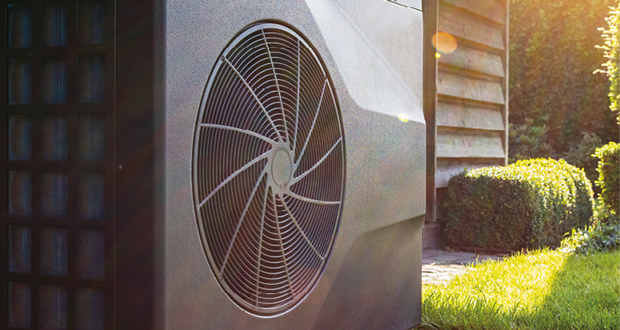 Michael Anderton, General Manager UK&I of HVAC Building Solutions at Johnson Controls on why heat pumps could be the secret weapon in solving the energy crisis
Michael Anderton, General Manager UK&I of HVAC Building Solutions at Johnson Controls on why heat pumps could be the secret weapon in solving the energy crisis
With the renewed awareness that our buildings account for 40 per cent of emissions, reviewing how the buildings around us operate has become an urgent priority. We are seeing a revolution in how commercial buildings run and meet sustainability goals. However, with hundreds of businesses struggling to make ends meet in the midst of the cost-of-living crisis, the focus on energy efficiency could risk slipping down the list of priorities.
A key solution lies in focusing on the reduction of operating costs and energy optimisation where it is most vital. And with heating and cooling making up almost 50 per cent of a building’s energy consumption, this seems a wise place to start from. Heat pumps will be essential in reaching a decarbonised future. They are cost-effective, too; the Carbon Trust’s latest findings demonstrate that heat pumps are able to deliver CO2 savings of up to 65 per cent compared to A-rated gas boilers, and 70 per cent compared to conventional electric heating.
REPLACE OUTDATED FUEL OPTIONS
While the switch to Heat Pumps (HPs) is gaining some traction in the UK, we are still far behind many other European countries when it comes to implementing them. It’s likely that this demand for fossil fuel boilers will decline, and HPs will accelerate as we gain momentum towards reaching net zero carbon emissions by 2050. Policy frameworks and price relatives between fuels are affecting the wide uptake of heat pumps.
But key industry leaders are beginning to join on the uptake; Waitrose recently announced it is replacing its gas boilers with electric HPs; in order to tackle energy costs and bring forward net zero plans. In addition to this, the government has already set a target of 600,000 heat pump installations per year by 2030, and the Committee on Climate Change estimate that 19 million heat pumps will need to be installed by 2050 to achieve global net zero goals.
DIFFERENTIATION IS KEY
The electrification of heat through HPs, where the electricity to drive the HPs comes from renewable sources, is a key technology in cutting costs and carbon emissions. HPs can be used as a primary source of generation, replacing fossil fuel boilers in the generation of heat. They can now work at higher temperatures, meaning they are a great option for spaces like hotels, hospitals, and leisure centres where there is a high demand for hot water at peak times – removing the need to use a gas boiler.
Choosing which HP model is right for a business, however, is not a straightforward decision. The decision is driven by the overall economic case, operator needs, health, safety and environmental (HSE) requirements and external factors, such as weather. There might be a need for the redesign of mechanical building services to enable lower supply temperatures, as well as investments into training to develop the skills needed to deliver installation commissioning, and maintenance. Ultimately, there is no one-size-fits-all solution when it comes to choosing which heat pump is right for a business, as it relies on an organisation’s individual requirements and operating pain points.
To tackle the issues at hand, businesses need to work with a partner that can deliver the most efficient solution based on these factors.
UTILISING AI
When external temperatures vary so much, ‘wasted’ energy can be reused in a building by integrating both heat pumps and chiller systems. By utilising hybrid systems, when there is a demand for heating or hot water, and cooling at the same time, the heat rejected from the cooling process can be extracted and reused for the heating process resulting in additional energy savings. Hybrid designs are especially useful for buildings that lack the space to install large scale heat pump and chiller systems.
Artificial intelligence (AI) and Machine Learning (ML) can assist in connecting and analysing building data at every level. Using model predictive control, AI and ML are able to predict possible outcomes for a building’s data set. This constructs an understanding of the actual energy conversion rate for each element of the building and ensures the system is run as one unit; not in siloes. New data can automatically be added as a consequence; creating better recommendations for energy usage. Anomalies are also identified; ensuring data is used to preview optimum operating point.
COLLABORATION WILL BE KEY
The UK needs new tactics to make operations future-proof. To truly drive the net zero agenda, a discerning look at operating systems will be key to energy reduction. Introducing heat pumps will drive down costs whilst keeping businesses aligned with their carbon emissions goals.
Fortunately, we don’t need to make the switch alone. Reducing costs and implementing improvements into existing systems are collaborative tasks. Selecting a reputable and reliable partner will allow businesses to install systems across a variety of different buildings with different needs. In utilising technology, people and processes we can ensure this newfound potential does not slip away.





